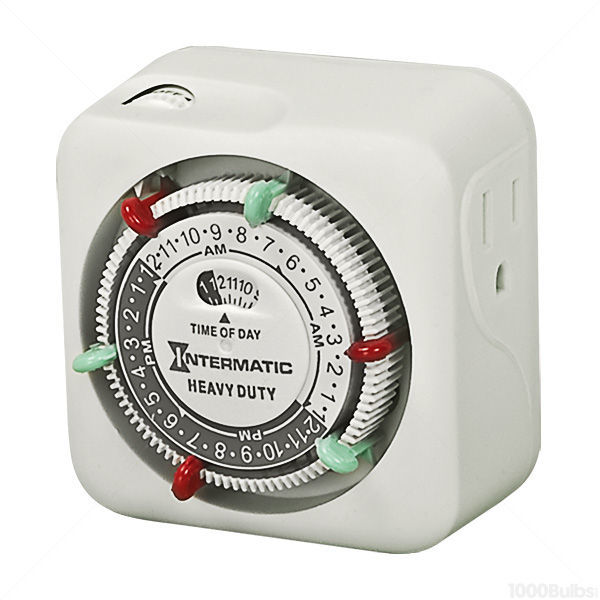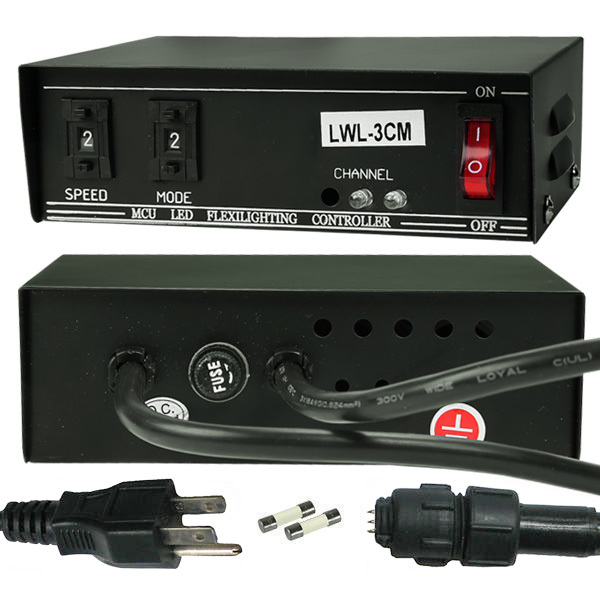Ultimate Christmas Light Guide – Part 5
We’re back and we brought tinsel! The fifth part of our guide steps away from the actual lights and into the figurative backstage with some of the items that make holiday lighting a source of amazement. Today, we’ll talk about the logistics of your lighting display, specifically mounting or installing your lights as well as managing your celebratory fanfare.
Mounting Your Lights
If the precise lines and true symmetry of lighting displays put a little extra warmth in your heart, then consider using mounting clips and mounting stakes to arrange your Christmas lights with accuracy. You would begin your meticulous masterpiece by measuring the areas you want to decorate. You should also locate your electrical outlets before installing the lights to determine where you will need extension cords. Mounting stakes can vary in height from the subtle, 4.5-inch stake to the nearly foot-long stake. If you are using C7 or C9 string lights with your mounting stakes, you'll need at least one light and stake per foot. Spacing on miniature light sets varies between two to three lights per foot between stakes.
Mounting clips are available in many styles and for many purposes. It is important that you use clips that are best suited to the material and placement on your home exterior. That means if the outside of your home is brick, you will want brick clips to hang your wreaths and lights. Gutter hooks work well when draping garlands and icicle lights from the edges of your roof. If you need to send Santa a special message or maybe just outline a runway, shingle tab clips for C7 or C9 string lights can help you illuminate your rooftop. C9 or C7 magnetic clips are a neat and convenient way to add lights to your metal gates, roofs, and sidings. You can try adhesive clips for mounting your mini lights in the perfect position. However when you need a clip for a variety of situations, multiple application clips can attach C7, C9, or mini string lights to shingles, gutters, or tiles.
Managing with Christmas Light Timers and Controllers
The benefits and magic of indoor or outdoor timers can’t be denied. Relive that debut moment and light your home hands-free over and over again with digital or analog timers. Timers are a great way to manage your lights as well as increase the efficiency of your energy usage. Most timers use a 24-hour format and can handle several on/off schedules. However, most timers also have max wattage limits and limited outlets. You will need to carefully consider the combined total wattage of all the lights to be controlled by one timer. More importantly, you will need to connect all of your lights in such a way that only one or two outlets are needed, unless you are prepared to use more than one timer.
The mesmerizing effect of strobing rope light never ceases to amaze. You can inspire the same looks of wonder with you own rope light controller. Before you buy the first controller in sight, there are a few key factors to consider. First, you must have chasing rope light, meaning incandescent or LED rope light designed to blink or handle the various changes in the power supply. Second, the controller must be rated for the voltage, rope light type, size, wire type, and load length of your rope light. As an example, if you have 150 feet of 120-volt, ½-inch, 3-wire LED chasing rope light you would need a 120-volt LED controller for ½-inch, 3-wire LED rope light lengths of 150 feet or more. Many rope light controllers can handle several sizes and strands of rope light, so read the specifications or packaging before you make a purchase. Rope light controllers can vary from an incandescent mini rope light controller for small, temporary installations to a 10-function LED rope controller, providing you with an array chasing mode options for up 164 feet of rope light. Some rope light controllers even feature a sound synchronization option. For non-chasing rope light, you can still have some control over the brightness by using a rope light dimming controller.
RGB strip lighting connected to a controller
For LED strip lighting, any effects you hope to produce can be achieved with dimmable strip lights. Strobing, flickering, fades in/out or other lighting modes can be done with an LED dimming controller. Similar to rope light, you need to make sure the controller capabilities match the voltage and wiring of the strip light. Color –changing or RGB strip lighting has 4 wires and requires a special 4-wire controller to display the range of colors. Whether it’s a single color or RGB strip lighting, various controllers may come with handheld remote controls or a wireless controller can be installed in a nearby wall.
If you have burning questions about wiring LED controllers, recommendations for the best or fastest strategy to mount lights, or you think the Trans-Siberian Orchestra is the only soundtrack you should ever sync your lights, please leave your comments in the area below. Send us pictures of your Christmas extravaganza and we will show the whole world on our Facebook, Twitter, LinkedIn, or Pinterest. The entire staff of 1000Bulbs.com has one ear listening for sleigh bells ringing and reindeer on roof and the other ear awaiting your phone call. Dial 1-800-624-4488 to report Santa sightings or for help creating a dazzling winter wonderland!









